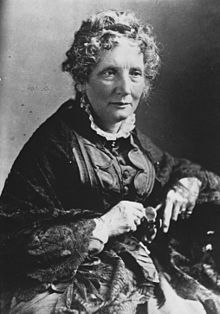Ten smiling faces from the Philadelphia congregation made their way up the drive to the International Centre on Wednesday, May 22. Led by Dolores Clerico and Regina (Jean) Laurich, the sisters made a week-long pilgrimage to see and experience sacred sites related to the foundations of the Sisters of St. Joseph.
 |
| The aperitif is a mix of moscador (sparkling white wine) and cassis. |
 |
| The sisters make a toast to their pilgrimage along with thanks for a safe journey. |
The sisters had morning and afternoon prayer and briefings. They learned more about the 17th century France, which gave them an historical context for what the founding sisters faced in Le Puy in 1650.


The sisters visited the Kitchen and were quite moved by it as they imagined the founding sisters living there in such a small space.
Pat tried out a footwarmer that the founding sisters likely used in the Kitchen.
The sisters visited the Living History Centre where they learned about 16th and 17th century France that led to the foundation of the six founding sisters. On the day before, they visited the Église du Collège where Father Medaille preached and the Tree of Martyrs where three sisters were guillotined during the French Revolution.
Jean Laurich and Dolores Clerico and confer on the 100 years before the founding of the Sisters of St. Joseph. Jean, coordinator of the Philadelphia sisters' Mission Integration, will lead next year's pilgrimage.
The sisters visited several other sites in Le Puy.

 |
| Cathedral of Notre Dame of Le Puy |

 The sisters attended Mass at Des Carmes parish, a 14th century church built by the Carmelites. Father Chamaly, pastor, recognized the sisters at Mass and thanked them for coming to Le Puy and Des Carmes. The people in the pews smiled and waved at the sisters in kind.
The sisters attended Mass at Des Carmes parish, a 14th century church built by the Carmelites. Father Chamaly, pastor, recognized the sisters at Mass and thanked them for coming to Le Puy and Des Carmes. The people in the pews smiled and waved at the sisters in kind. |
| Chapel of St. Clair (St. Michel is on the left) |
Église du Collége, a Baroque-style church, one of the first of its kind in France. Father Medaille preached here and the early sisters worshipped here.
Place du Plot is a central gathering place in the old city.
Although it looks formidable, several sisters climbed St. Michel and were glad they did.
Lunches at the Centre were light despite the sisters' vigorous activity in the city. Lunches included salad, cheese, jambon paté (ham paté) and everyone enjoyed it.
 The meal included a salad and a main dish of trout, chicken in a curry sauce, or beef in a wine sauce. All topped off with fancy French desserts. Delicious!! The sisters learned how to read a French menu where diners have a choice of three courses or four courses with various combinations of appetizers, main dish, cheese, dessert.
The meal included a salad and a main dish of trout, chicken in a curry sauce, or beef in a wine sauce. All topped off with fancy French desserts. Delicious!! The sisters learned how to read a French menu where diners have a choice of three courses or four courses with various combinations of appetizers, main dish, cheese, dessert. 
The French in Le Puy don't typically serve butter with the meal. You must ask for it. Our server graciously supplied it, but the butter was only about 2 square inches. M.E. and Pat and shared it with a couple other sisters with still some left over.
Inspired by the sacred spaces and stories of our founding sisters (and brothers) as well as my pilgrim companions. Challenged to live the gifts of grace of love.
Literally standing and walking in the footsteps of our first Sisters has been a very sacred experience. Joan
The fire of the Spirt went through the entire time in Le Puy. Mary Esther
My experience at the International Centre was a journey with companions into the heart of God—a changing awareness and deepening of my vocation. Maryanne
The Pilgrimage Experience has been an opportunity for deepening my SSJ identity allowing the time to become more aware of the gift of PRESENCE and ministry of PRESENCE. Rosanne
The pilgrimage has been a profound experience of heritage and hope. The bonds and memories created in these ten days will surely continue to bless us. Merilyn
SSJ Hospitality at its finest. Pat
A blessing. Sheila
Powerful and Inspiring Experience. “M.E.”
We said good-bye to the sisters on Tuesday morning after breakfast. They posed for a few last photos. It's always sad to see the new friends we have made say good-bye. However, we are glad to have the opportunity to provide them with hospitality in the sacred spaces of the Sisters of St. Joseph.
 Bernard, from Schmitt Voyages, served as the driver. He took good care of the sisters on the ground to and from Lyon to Le Puy.
Bernard, from Schmitt Voyages, served as the driver. He took good care of the sisters on the ground to and from Lyon to Le Puy.






























